While your diet should consist of nutrient-rich food, not all of us are familiar with the nutritive jargon to pinpoint the food that meets our nutritional requirements.
Let’s dive into the major nutrients before streamlining the dietary regimens that have piqued people’s curiosity with their promise to deliver real results.
Nutrients Simplified
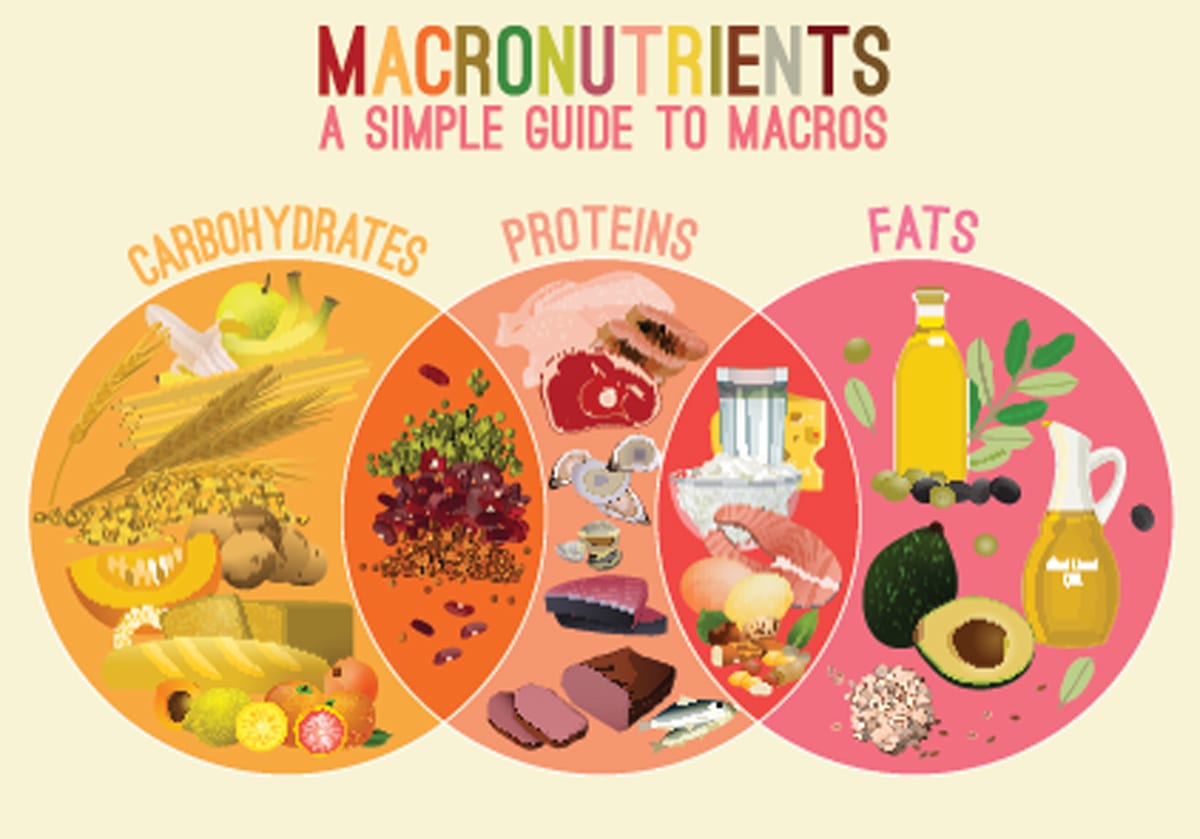
What’s more; nutritional deficiencies can weaken our immune system and make us more vulnerable to infections. In fact, the Institute for Health Metrics states that poor nutrition has nearly three times the impact on health as low fitness. Therefore, we’ve created a rundown of some essential nutrients that must be a part of your diet.
Divisions of Nutrients

What are calories, you may ask? A calorie is a unit that measures the energy content of both foods and beverages. While an average woman needs to consume approximately 2,000 calories each day, an average man should aim for 2,500 calories to maintain their fitness. If you are trying to lose weight, you need to eat fewer calories than the amount that’s burnt by your body each day.
Today, let’s dig deeper to unravel what three primary macronutrients should be included in your diet plan.
No More FAT Fear
Fat has earned a bad reputation in the dietary world for being the leading cause of obesity. Many individuals are unaware that the inclusion of fat in your diet is vital for good health.
It provides a surplus amount of energy and essential fatty acids that your body can’t make on its own like Omega-3. It is very beneficial for your heart, brain, and eyes but is only found in the likes of salmon and sardines.
That’s not all! Fat-soluble vitamins A, D, E, and K are very required by the body not just to keep the immunity strong but also protect body cells from pollutants. This nutrient, which also facilitates muscle movement and blood clotting, is adequately found in foods like olive oil, nuts, and seeds
Fuel Your Body with Carbohydrates
If you ever get confused about what are carbohydrates, remember the mnemonic SFS- sugar, fiber, and starch. Carbs have long been known for contributing to weight gain. However, these are super-essential as it provides a significant share of energy for the body to carry out everyday functions.
Before noshing on a carb-rich diet, one should be aware of two categories of carbohydrates- simple and complex. While the former one can have adverse effects on one’s cardiovascular health and increase the risk of type-2 diabetes, the latter is associated with the reduction of cholesterol levels.
Moreover, the complex carb is also known to lower the risk of diabetes as it doesn’t lead to blood sugar spikes, unlike the simple ones. To treat your body with good carb, you can feast on most veggies, whole fruits, legumes, nuts, seeds, and whole grains. But it’s best to be at a distance from sugary drinks, white bread, processed food, and products made using refined wheat.
Build Your Body with Protein
Having enough intake of protein-rich food makes you feel more satiated compared to two other macronutrients. This happens because protein reduces the production of ghrelin- the hunger hormone and increases peptide YY- the satiety hormone.
For your daily dose of protein and without depriving your taste buds, treat yourself with eggs, oats, nuts, dairy products, and whey protein supplements.
Criteria to Choose the Perfect Diet
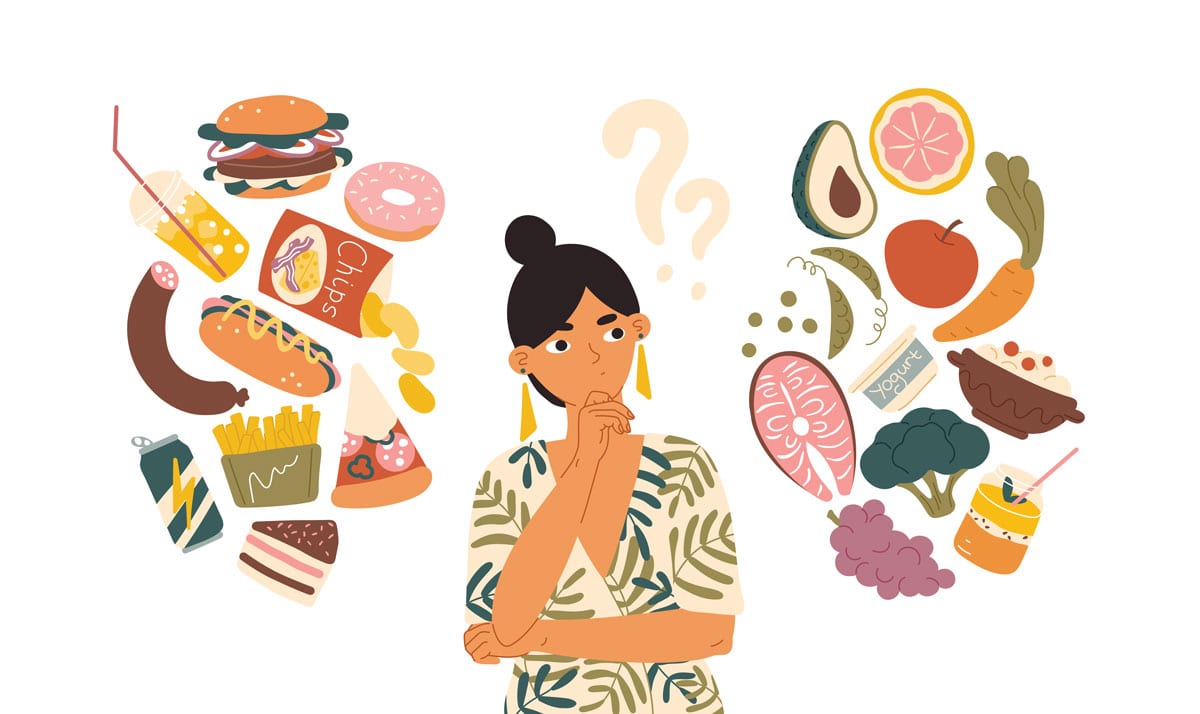
Sustainability
After all, it’s going to require a deliberate, persistent effort to curate a lifestyle that is personalized to you and your circumstances. If you believe that you cannot sustain the diet, in the long run, it’s time to move on to other plans.
Flexibility
Also, the diet should not be very restrictive that you are left with no cheat day to plan a well-deserved indulgence. This, however, doesn’t mean binge eating your favourite sugary treats or drowning yourself in alcohol.
Eating Preference
To know the answer, ask yourself two simple questions- ‘will you look forward to your meal every single day?’ and ‘would you love eating the food you are tolerating for your life?’
Answer these questions, and it will help you decide which particular diet or not is right for you.
Pros
Con’s
Sustainability
Diet Type
Ketogenic
- Helps in dramatic weight loss
- Exclusion of processed food with added sugar
- May help in the reversal of
- Highly fat-centric
- Limited carb
- Little room for protein
- Challenging dietary regiment
Sustainability
Temporary
Diet Type
Weight30
- Helps in total lifestyle change by building a better relationship between you and food
- Exclusion of alcohol, sugar, grain, and legumes
- May contribute to weight loss
- Identify food intolerances
- Higher energy level and improved athletic performance
- Strict set of rules for 30 days
- No cheat day allowed during the time period
- Exclusion of dairy products
Sustainability
1 month/ 30 days
Diet Type
Atkins
- Less calories from refined foods
- Chances of an improved lipid profile
- Helps in controlling blood sugar levels
- Carb-restricted
- Can harm kidney patients due to increased protein intake
- Drop-in calcium, potassium, and fiber levels
Sustainability
Temporary
Diet Type
DASH
- Combat high blood pressure
- Lower risk of heart disease
- Emphasis on fruits and vegetables
- Reduces salt intake
- Consumption of fruits, veggies, lean protein, and whole grains
- Limited salt consumption is associated with heart disease and insulin resistance
- Not designed for weight loss
- Difficult
Sustainability
Life Long
Diet Type
Mediterra-nean
- Emphasis on the consumption of healthy fats
- Reduced cholesterol
- Lower risk of heart disease
- Teeming with cancer-fighting anti-oxidants
- No guidance on protein intake
- Requires freshly cooked food which may be difficult for people with a busy schedule
Sustainability
Life Long
Diet Type
Vegan
- Reduces the risks of cardiovascular diseases
- Fiber-rich
- Meet the nutritional requirement like omega-3
Sustainability
Life Long
Diet Type
Paleo
- Curb added sugar and Sodium
- Flexibility makes room for some indulgences
- May help control blood sugar level
- Lack of necessary nutrients due to the exclusion of dairy, whole grains, and legumes
- Not suitable for vegetarians
- Induce vitamin deficiencies
Sustainability
Not more than 12 weeks
The Mediterranean Diet
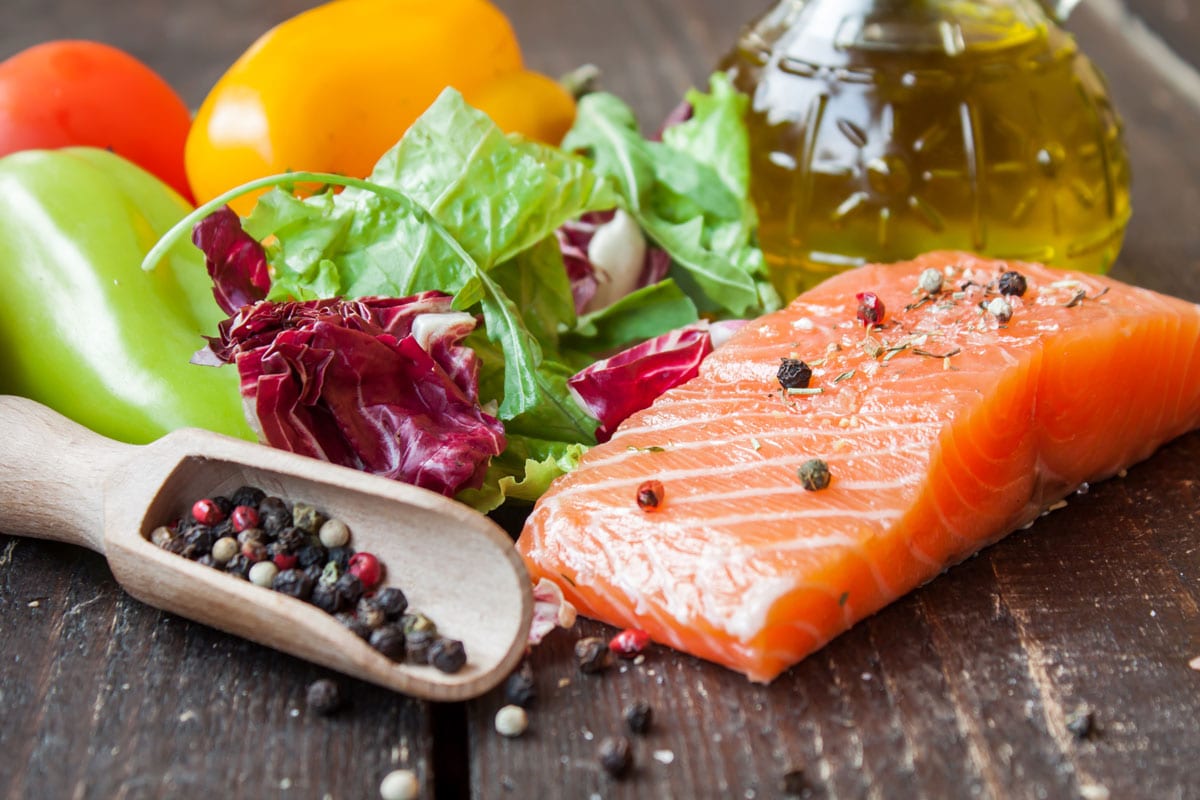
Best for: Heart health and Long Term Wellbeing
Based on the traditional dietary pattern practised by people who lived around the Mediterranean Sea, it emphasizes plant-based foods like vegetables and fruits, nuts and seeds, whole grains and legumes, and plenty of extra-virgin olive oil; often fresh fish and other seafood.
How the Mediterranean Diet Works
From the 196o’s the Mediterranean diet has been praised. It combines the basics of healthy eating with the traditional flavours of the Mediterranean. While this food regimen doesn’t significantly limit your fat intake, it mirrors the basic principle of good nutrition to cut down your intake of red meat, sugar, and saturated fats.
Unlike many traditional weight-loss diets, the Mediterranean Diet is primarily plant-based—advocating to eat fresh vegetables, fruits, and grains for each meal. The primary sources of protein are fish and seafood, as well as beans and legumes, consumed multiple times per day, which is supplemented with small portions of low-fat dairy and egg whites.
What’s more; because the Mediterranean diet is less stringent, it recognizes the importance of enjoying meals (and a bubbling bottle of red wine) with friends and family, which comes with additional mental health benefits.
Pro’s
The Mediterranean diet is considered to be one of the healthiest eating plans recommended by the Dietary Guidelines for Americans to promote wholesome health and increased longevity.
The scientific support for Mediterranean eating is relatively strong. According to the Lyon Diet Heart Study, the Mediterranean diet demonstrates the reduced risk of cardiovascular diseases at least as much as that seen with other low-fat, vegetarian diets.
Also, studies reveal that by supplying a moderate amount of dietary fat, the Mediterranean Diet encourages healthy weight management by helping you feel satiated for longer
Con’s
Conversely, some essential elements of the Mediterranean Diet may be not only uneconomical. It is challenging to obtain foods from some parts of the world. While olive oil is hands down more expensive than other vegetable oils, nuts and seeds can equally dig a hole in your wallet.
To keep a check on the cost of following the Mediterranean Diet, one needs to practice cooking frequently to align with the dietary requirements. Those who do not like cooking, or cannot spare out time to cook, may not find the Mediterranean Diet compatible with their lifestyle.
Typical Results
Some of the recent research conducted on the Mediterranean Diet hints at a more sustainable weight loss over time. Although initial results may not be as noteworthy as with other diets, the Mediterranean Diet is easier and more pleasurable to comply within the long term.
In fact, trials conducted by Lancet Diabetes Endocrinol have shown significantly reduced waist circumference with the Mediterranean Diet, which can improve the patient’s weight-related comorbidities.
Is this diet right for me?
The Mediterranean Diet can turn out to be an excellent fit for those who wish to achieve wholesome health and possibly lose some weight along the way. If you suffer from hunger pangs on other diets, then you may like the Mediterranean Diet for its extra dose of fat and fibre.
As with any other weight loss approach, the secret to creating clinically significant and lasting weight loss results on the Mediterranean diet depends mainly on the patient’s willingness to make lifestyle modifications.
For all those avid fruit and vegetable lovers, you may find it easier to make a transition to a Mediterranean Diet. Conversely, if you love poultry and red meat, or cannot resist processed food, then switching to this diet may not produce the best results for you.
The Paleo Diet
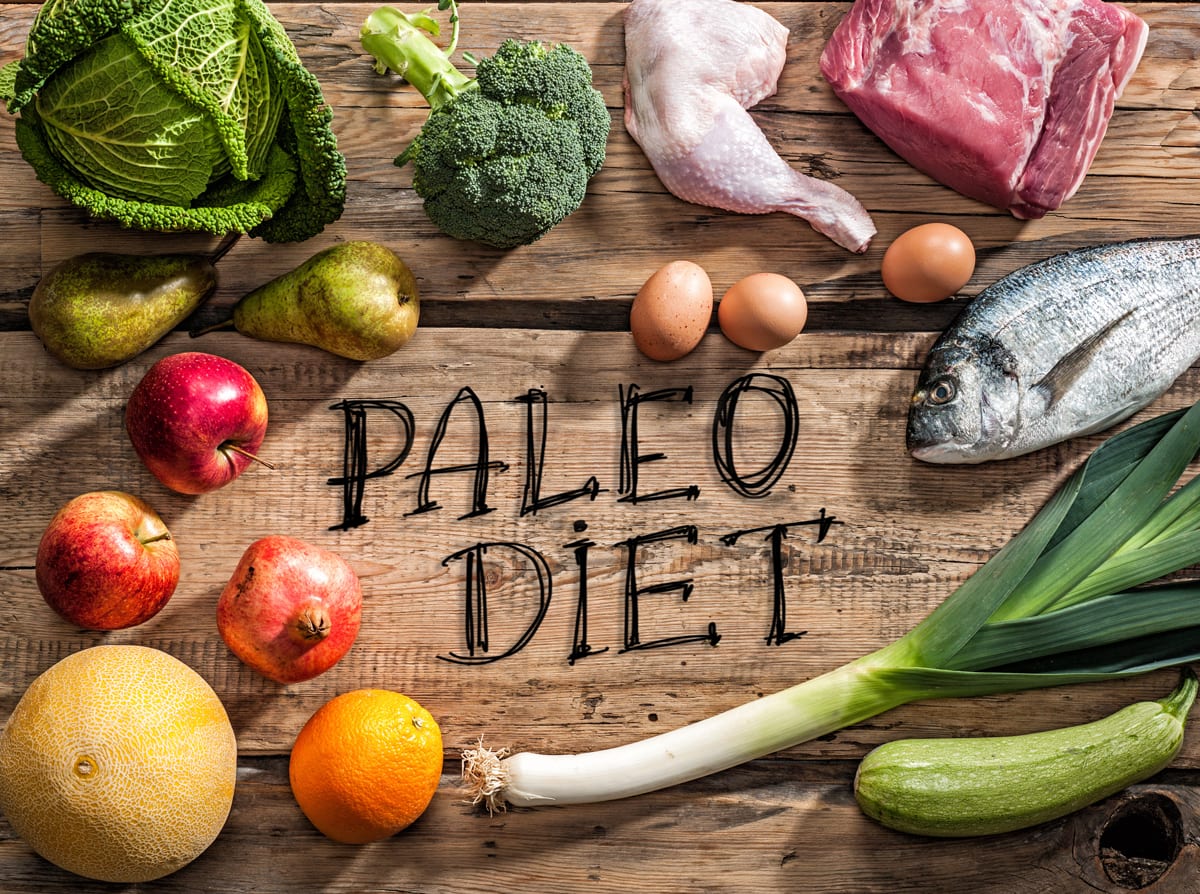
Best for: Losing weight or maintaining a healthy weight
The Paleo diet dates back to the dietary pattern of our Stone-age hunter-gatherer ancestors— with an emphasis on eating the same foods they ate before agriculture developed. Research confirms that it helps minimize your risk of chronic disease (based on the evidence that pre-agricultural ancestors didn’t suffer from the ones we face nowadays) and lead to weight loss.
How the Paleo Diet Works
The Paleo Diet leverages the concepts from evolutionary nutrition theories into today’s western diets. Based on human biology, it doesn’t ask followers to worry about calorie-counting or portion control. As the premise goes, the protein and fibre-rich content of the diet is expected to provide satiety— which naturally decreases caloric intake, unless you are eating for non-hunger reasons.
While the Paleo Diet advocates for avoiding processed foods, sugar, dairy, and grains, it strongly emphasizes whole foods including, lean protein, fresh vegetables and fruits, nuts, and seeds. In fact, some more flexible forms of the Paleo diet also approve of dairy products like butter and cheese, in addition to tubers like potatoes and sweet potatoes.
Pro’s
The Paleo Diet emphasizes fresh fruits and vegetables and supplies an ample amount of micronutrients. Several studies have shown that a diet rich in fruits and vegetables offers several health benefits, including risk reduction of cancers.
The diet stirs up the consumption of omega-3 fatty acids which are loaded with the goodness of anti-inflammatory properties. Clinical Trails prove this makes it effective in reducing the risk factors for heart disease, such as cholesterol, blood triglycerides, blood sugar, and blood pressure.
The Paleo Diet has earned itself favourable scores for satiety, which means that paleo dieters tend to naturally eat lesser carbs, more protein, and about 500–900 fewer calories per day. This is backed by several studies that demonstrate the paleo diet can result in significant weight loss and reduced waist size.
Con’s
The Paleo Diet discourages the consumption of some food groups such as whole grains, legumes, and dairy products that provide several nutritional benefits.
While this stone-age diet may not be the most feasible option for the vegans and vegetarians, others may find it challenging to pursue because of the unrealistically long time required for meal preparation.
According to one nutritional research, the food requirements for the Paleo Diet can be expensive and increase your grocery bill by 10% compared to a healthy diet.
Typical Results
Most Paleolithic dieters have reported losing weight in the short term, even when the weight loss is unintentional. Since it is primarily a low-carb diet, you will initially lose water weight. However, the weight loss can vary significantly beyond that point, as the Paleo Diet does not define a specific calorie recommendation.
Based on a research study published in the European Journal of Clinical Nutrition, participants lost between 2%–3.5% of total body weight after the first two to three weeks of starting the diet. And the participants reported losing 4%–6% of total body weight after 10–12 weeks.
Is this diet right for me?
There is undoubtedly some significant evidence that suggests following the Paleo Diet can lead to short-term weight loss and improvements in metabolic syndrome. However, it is best to experiment with this diet pattern with short-term commitments. A more realistic, and likely more sustainable, the approach would be to incorporate some of the principles of the Paleo Diet into a less strict diet
The Atkins Diet
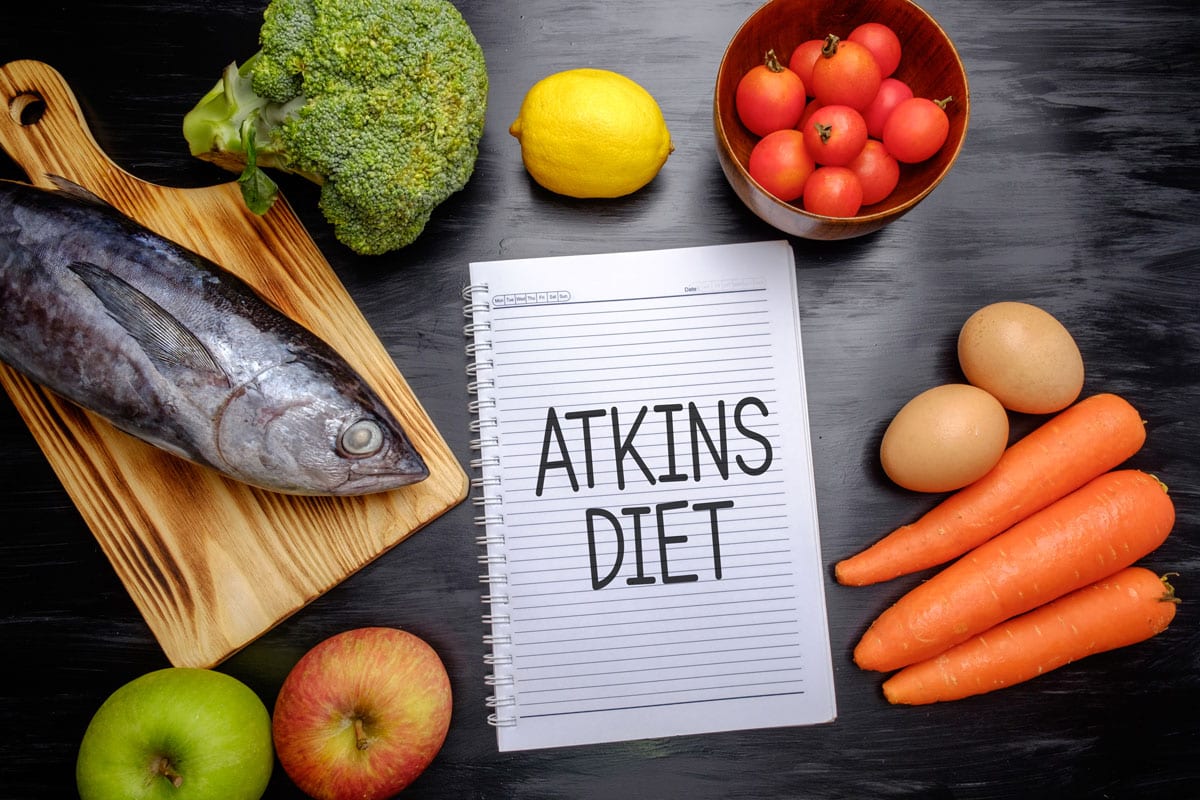
Best for: Weight Watchers chasing quick results
Atkins diet is simply the amplified version of Keto. Instead of no-carb, it’s “low carb” and lots of fat. The diet is extremely popular as it allows individuals to eat profuse amounts of meat and high-fat foods without worrying about caloric restrictions.
How the Atkins Diet Works
While there may be well over 1000 published weight-loss diets in the fitness industry, only a few have managed to command attention as the Atkins Diet. Developed by the late Dr. Robert C. Atkins, this low-carb, high-protein weight-loss plan is not only known for its instant weight-loss results but as a change in eating for a lifetime.
The Atkins diet focuses on limiting carbohydrates (glucose) and switching your body to burning fat for fuel instead of carbs, which in turn supplies a more consistent level of energy. While the foundation stone of the Atkins Plan lies in the reduction of carbohydrates, the diet has dramatically evolved over the years to offer two options.
With Atkins 20, the starting point or the ‘Induction phase-1’ allows you to consume 20 g of “Net Carbs” (carbohydrate minus grams of fibre) per day. The Atkins 40, on the contrary, allows a starting point of 40 g of Net Carbs per day. Both the plans slowly and gradually allow for an increase in healthy carbohydrates- enabling one to find the right balance where one can eat carbs without gaining weight back and stick to it.
Pro’s
The Atkins diet has been studied extensively across the world. It has been found to have a dramatic reduction in body weight faster than low-fat diets. What’s more; numerous studies confirm that the low-carb Atkins diet is not only helpful for weight loss but especially successful in reducing belly fat, which is arguably the most dangerous fat lodged in your abdominal cavity.
Compared to other diets, low-carb eating plans like Atkins, are scientifically proven to reduce the risk factors for cardiovascular disease, including blood triglycerides, insulin, and blood pressure. The latest research suggests that the low-carb Atkins diet also better improve “good” HDL cholesterol, blood sugar, and other health markers.
Con’s
While this diet plan has demonstrated a very good safety profile with incredibly low reported complications, pregnant women and individuals with compromised renal function may require additional monitoring or slight modifications to the Atkins Diet plan
Typical Results
As with any weight-loss diet, it is difficult to generalize the results as they vary from one individual to the other. On a realistic note, Atkins dieters may experience a healthy weight loss of about two pounds per week. Even better; the initial results on the Atkins Diet are significant and can average between 8 and 15 pounds in the first two weeks.
It is important to note, however, that the initial weight loss most likely occurs due to a reduction in total body water and depleting glycogen stores.
Is this diet right for me?
There are specific considerations that will help determine if it is a sage idea to embark upon this dietary regimen. First, ask yourself if you can significantly reduce the sugar and carb intake, including fruits, grains, and dairy products.
Since the Atkins diet primarily works by restricting grams of carbs— so one must be willing to stay put with a calculator and keep a strict check on the carbohydrate intake. That’s not all; you must ask yourself if you can consume a high percentage of protein from fish, eggs, and meat. Also, can you drink at least eight cups of water daily?
The Vegan Diet

Best for: Clean Eaters who care for the Environment
The hallmark of vegan diets is the absenteeism of the foods that come from animals, including meat, poultry, and honey. While veganism is the strict most form of vegetarianism, it is also associated with the fight against animal exploitation and cruelty. Vegan dieters, in general, have to eat mindfully while adhering to a comprehensive dietary pattern that combines plant foods to achieve complete balanced nutrition.
How the Vegan Diet Works
In a nutshell, a vegan diet gets as healthy as you make it. Your primary emphasis lies on food groups like fresh fruits, vegetables, whole grains, and high-quality natural protein sources such as seeds and legumes.
This means it is the high-time you forgot about pretzels, pasta, or the diet coke, and get back to the basic nutritional principles that apply to all diets—healthy fat, protein, and carbs. Then, work on meeting your daily nutritional requirements via truckloads of nutrient-dense whole foods. What’s more; consider enhancing your clean and green diet with select nutrient supplements you may be struggling with, like vitamin B12 and D.
Remember: as a vegan, you have to eat more and more to satiate yourself up. (Finally, a diet that allows you to eat more…dream come true ;)!)
Pro’s
Multiple studies indicate that switching to a vegan eating plan is associated with moderate weight loss without the need for calorie tracking or portion control. The high fibre content of vegan regimens that are free of refined or processed foods — is most likely to increase satiety and reduce hunger naturally, which is a benefit that entices many individuals to adhere to veganism.
According to several intervention studies, following a vegan diet causes significant improvements in cardiometabolic risk factors and glycemic control. What’s more evidence from one research group demonstrates the potential for the combination of vegan diets, meditation, and exercise to reverse atherosclerosis.
The move toward a plant-based vegan diet is also most likely to serve widespread benefits for the Environment and the planet. For example, there is clear evidence that vegan eating contributes to reduced greenhouse gas emissions and water use for food production.
Con’s
A vegan diet may pose a substantial risk of nutritional deficiencies as it doesn’t guarantee a healthful, balanced diet. Also, most of the vegan eating regimens exclude foods that many Americans eat routinely, which means that they may be hard to sustain.
Some vegan dietary components such as sugar, if ill-conceived or consumed in excess, can combine the adverse exposures of plant-based junk foods with nutrient deficiencies
Typical Results
Vegan diets are consistently linked to weight loss due to reduced calorie intake, which leads to more sustainable results in the long-run. In fact, as per an 18-week controlled trial, the vegan group of participants was allowed to eat until fullness, whereas the control group on other weight-loss diets had to restrict calories. Results demonstrated that people on a vegan diet lost 9.3 pounds (4.2 kg) more than those on a control diet.
Is this diet right for me?
If you are an adult who happens to be obese or have cardiometabolic risk factors and are ready to change what you eat considerably, a vegan diet might be the perfect resort for you.
This means you will have to give up on almost all refined and processed foods, being resolved to take vitamin and mineral supplements, and consuming a diet rich in ALA (found in flaxseed, walnuts, canola oil, and soy products) to prevent nutritional deficiencies. As a reward for sticking religiously to these dietary changes, you are most likely to lose weight and reduce your cardiometabolic risk profile.
The Dash Diet

Best for: Combating high blood pressure & reducing the risk of several health conditions
The DASH (Dietary Approaches to Stop Hypertension) diet was initially designed to limit the nutrients intake. The theory is support the slowing down of the rising incidence of hypertension by reducing the blood pressure, The other benefits of the DASH Diet it promotes weight loss. There are only potential benefits, including reduced cancer risk and the lowering metabolic syndrome risk.
How does the Dash Diet Work
The DASH Diet is based on the increase consumption of fruits, vegetables, whole grains, and low-fat dairy, and the reduction in meats, saturated fats, and sweets. The diet aims to achieve a calculated optimum intake level of selected nutrients that were hypothesized to benefit blood pressure control. These nutrients include protein, fiber, potassium, magnesium, and calcium.
What’s more? The Dash diet encourages people explicitly to cut down or preferably eliminate the intake of Sodium, which is the main culprit behind increased blood pressure. Even worse, Sodium is hands down the primary ingredient in table salt, and it is naturally occurring in some foods. While it is true that the human body does require salt, the Dash diet beats hypertension by supplying a moderately low amount of Sodium.
Depending upon their health needs, an individual can choose from two versions of the DASH diet:
Standard DASH Diet A maximum of 2,300 milligrams (mg) of Sodium per day
Lower-Sodium DASH Diet A maximum of 1,500 milligrams (mg) of Sodium per day -A more stringent version
Pro’s
While the DASH Diet has a plethora of benefits, what gives it an edge over most other health regimens is its scientific credibility. Many scientific studies (cited below) have reported its health benefits—starting from reduced blood pressure and reduction of LDL bad cholesterol to reduction of cardiovascular risks and improved cognitive function.
According to a recent study, the DASH diet demonstrably lowers blood pressure in both healthy individuals as well as the ones with high blood pressure— even if they didn’t restrict salt intake. However, it was observed that limiting sodium intake lowered blood pressure even further.
A safe, well-balanced, and proven diet plan, the benefits of the DASH Diet can be reaped by just about anyone. Why may you ask? This is because, while powerful, the DASH Diet is a relatively more straightforward eating pattern to follow. It allows you to choose from your favourite foods within each food group—a definite advantage over more restricted diets.
Con’s
The number one challenge when starting the DASH Diet is to eat as many whole foods in their most natural form. This leaves very little room for consuming prepackaged, processed foods.
Therefore, the DASH diet requires careful preference and planning while shopping, in addition to spending more time on food preparation compared to a diet of highly-processed, ready-to-eat food.s
Typical Results
Successive controlled feeding studies reveal that a majority of participants of the DASH eating pattern experienced a considerable decrease in blood pressure, improved lipids, and other markers of improved health. Even better; closer adherence to the DASH dietary pattern also reflected a lower risk for cardiovascular disease and stroke.
All in all, while greater adherence to the DASH diet results in a more significant health benefit, any adherence may also be beneficial and so should be encouraged.
Is this diet right for me?
The DASH dietary pattern has been strongly advocated by the American Dietary Guidelines for individuals two years and older (with the exception of those who should limit potassium intake. Or for those people who have chronic kidney disease especially in stage 4 and 5).
In addition, it may be hard to adhere to the DASH diet pattern 100% if an individual is intolerant or allergic to dairy products. However, this doesn’t mean that one cannot adopt other aspects of this pattern. In some cases, dairy intolerance may simply be relieved by consuming lactose-free milk or lactase treated products dairy products.
The Keto Diet
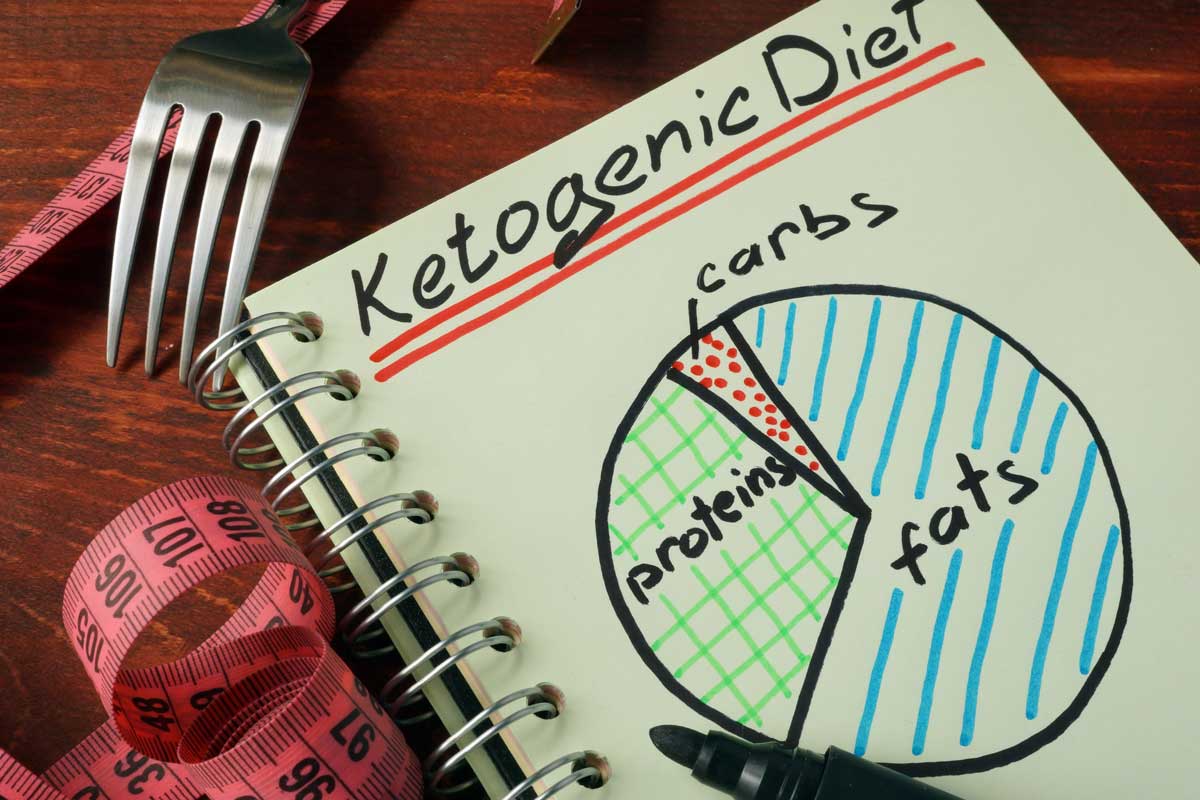
Individuals aiming for rapid weight loss
The miraculous ketogenic (Keto) dietary plan that has taken the whole world by storm relies on high consumption of healthy fat, low carbohydrate, and protein falling into the moderation intake window. Touted by everyone for its unbelievable weight loss perk, the keto diet also improves other anatomical conditions like cardiovascular health and blood pressure.
How the Keto Diet Works
When you jump on a keto bandwagon, your body enters a metabolic state known as ketosis. One can achieve the state of ketosis when the body experiences a drastic decrease in the level of carbohydrate- the primary source of energy in the body. Left with no other function, the body begins to burn fat in order to generate fuel to carry out bodily functions.
Pro’s
Keto diet is religiously followed by many to reap its incredible weight loss program. One of the many studies states that keto devotees lose 2.2 times more weight than the ones who follow a calorie-restricted low-fat diet.
The low carb diet has made a name for itself for its impressive ability to enhance improve insulin sensitivity by a whopping 75%. Keto also contributes to lowering HDL cholesterol levels and blood pressure.
Con’s
This challenging dietary regimen prohibits you from relishing carb-rich delicacies like pasta and bread, starch-laden veggies and fruits, and sugary treats. If you are not careful about what you eat, chances are you will be kicked out of ketosis, which is the key to the keto diet.
When you initially dip your toes in the keto world, you may experience keto flu with symptoms like weakness, headache, and loss of electrolytes. This happens due to a colossal change in your dietary practice so give your body a couple of weeks to adapt to the new diet.
Typical Results
Soon after you start the keto diet, you will observe a sudden increase in the energy which causes restlessness and jitters, but it will settle down in a week’s period. You’d also be surprised to know that your ravenous appetite will decrease to a great extent making your incessant craving non-existent.
That’s not all! You will start to notice some inches fall off your frame melt as you stick to the diet composition, 60-70% fat, 15-30% protein, and 5-10% carb, for 3-4 weeks.
Is this diet right for me?
If you have been suffering from obesity and want to shed the stubborn fat, the keto diet is the perfect regime for you. This is because obesity is the harbinger of many other health risks like blood pressure and diabetes.
The Whole30 Diet
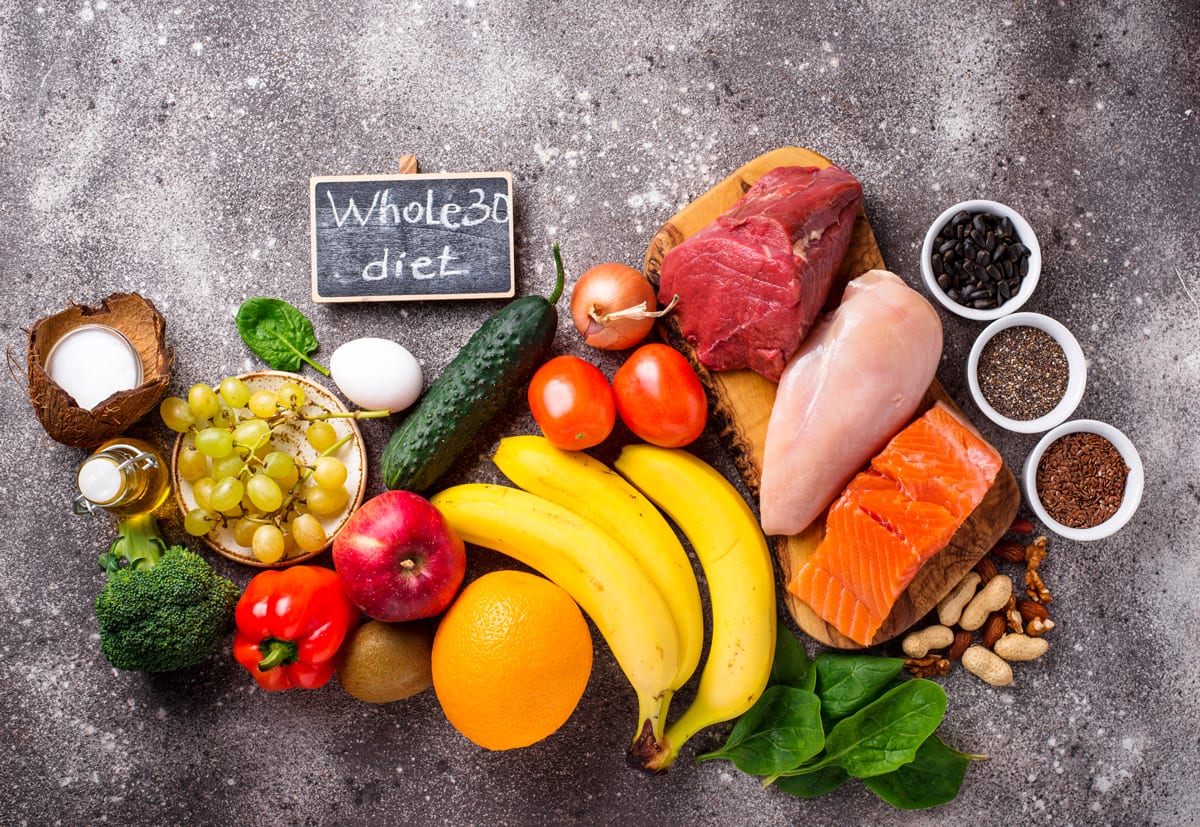
Best for: People looking to get into a balanced diet routine
The uber-popular Whole30 dietary program must have come across your radar if you’ve been researching various diets to reset your relationship with food and remove all of the potentially inflammatory foods and beverages. Developed by two certified sports nutritionists in the year 2009, Whole30 is a nutritional program tailored to change the way you feel and eat in 30 days.
How the Whole30 Diet Works
The much-raved diet works on the concept of cutting out whole food categories, including dairy, grains, beans, and any food with added sugar for the entire 30 days without any cheat day. To improve your eating habits, you will have to eat three ‘clean’ meals a day and nosh on Whole30-approved ingredients like veggies, meat, seafood, and eggs.
The best part about following this diet is you can dig in any amount of food. You only have to be careful not to relish the foods that fall under the off-limit category.
Pro’s
This month-long, clean-eating program helps you identify food intolerances in the reintroduction phase. Once you complete your 30-day commitment, you can gradually add back one food group at a time in your diet and observe how your body reacts.
The proponents of Whole30 claim to alter the psychological bond you share with your food and body above and beyond simple weight loss. The limited intake of less processed food and increase in the fresh food are the keys that help you to cut down unwanted weights off your body.
Con’s
Whole30 restricts food like legumes and dairy because of which an individual is deprived of all the nutrients he needs.
High in Sodium and cholesterol
There is an extensive list of foods that are off-limits and rigid rules sans any indulgences, and it’s one unsustainable diet fad.
Typical Results
If you are an emotional eater or genuinely addicted to sugar, the first few days of the month can be quite bumpy. However, the positive transformation you start to observe will keep you going. From incredible improvement in your skin tone and texture to not hitting an energy slump, you will be astounded at the changes you experience within 10 days of practising the diet
Is this diet right for me?
Have you been thinking about giving the much-buzzed Whole30 diet a try? If you are looking forward to resetting your eating habits and also pinpoint food intolerances, there’s no other diet that could be right for you.
If weight loss is your primary goal, this diet may not help you hit the weight loss target. Due to the creation of a calorie deficit, you may shed some pounds after following the restrictive diet. But it may not be a long-term effect as the dietary plan is only followed for 30 days, and you may gain the weight back
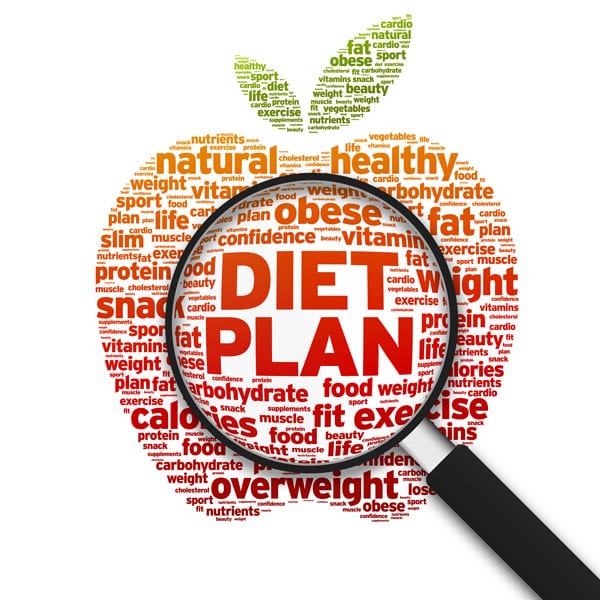
References
- https://www.nature.com/articles/ejcn201539
- https://www.sciencedirect.com/science/article/pii/S0271531711000960?via%3Dihub
- https://www.thelancet.com/journals/landia/article/PIIS2213-8587(16)30085-7/fulltext
- https://www.nejm.org/medical-articles/original-article
- https://www.mayoclinic.org/healthy-lifestyle/nutrition-and-healthy-eating/in-depth/paleo-diet/art-20111182
- https://vegan.org/
- https://pubmed.ncbi.nlm.nih.gov/18700873/
- https://providentliving.churchofjesuschrist.org/bc/providentliving/content/english/self-reliance/health/pdf/nutrition-and-diet.pdf?lang=eng
- https://www.annualreviews.org/doi/pdf/10.1146/annurev-publhealth-032013-182351
- https://www.oyofitness.com/wp-content/uploads/2018/08/OYONutritionGuide.pdf
Other Articles you may like.
Bicycle Crunches
Bicycle Crunches is one of the very best abdominal and obliques muscles strengthening exercises around. It will also activate the rectus abdominis – your upper abdominal muscle. It also dramatically strengthens your core and help maintain good posture. The Bicycle Crunches are about 250% better than standard crunches
The Hamstring and Calves Stretch
The Hamstring and Calves Stretch will improve flexibility and allow more hip motion. The hamstrings and calves can quickly tighten when undertaking any kind of running, dancing or wearing high heel shoes.
Floor Heel Taps
The Floor Heel Taps is excellent to strengthen your back, buttocks, Abs, and thighs at the same time. By lying flat on the mat, and lowering and raising your legs, you feel all your lower body muscles working. One of the benefits of this exercise is very safe and simple to be performed by most people.
The Floor Heel Tap is particularly is suitable for those people who need to strengthen their back or hips.




